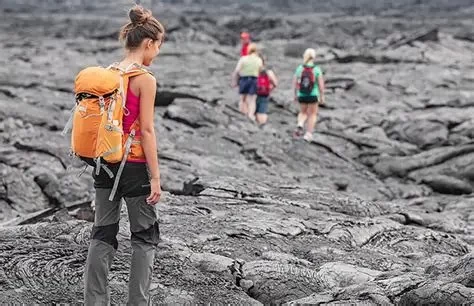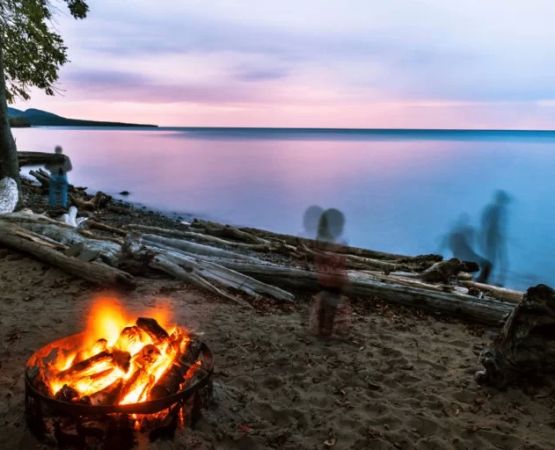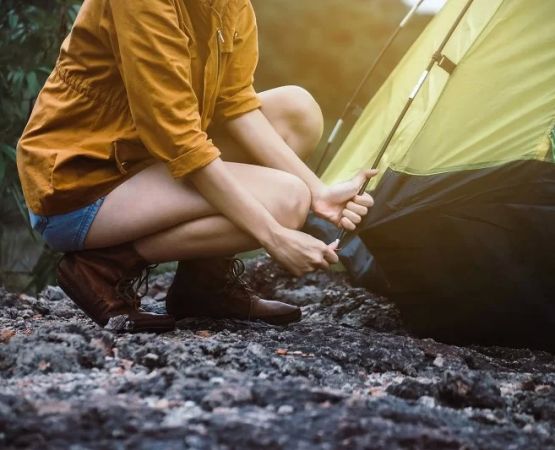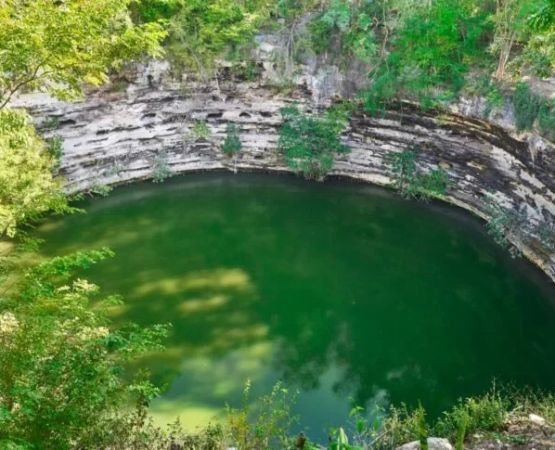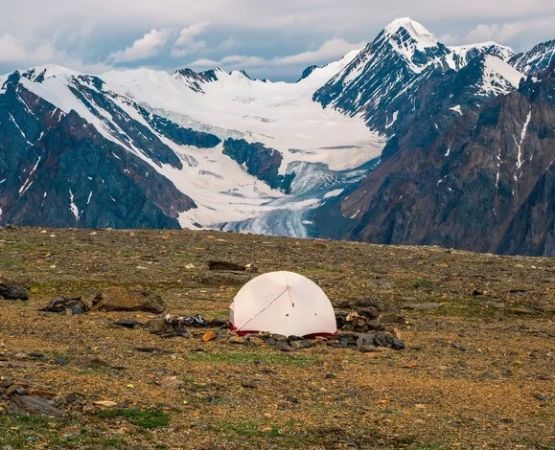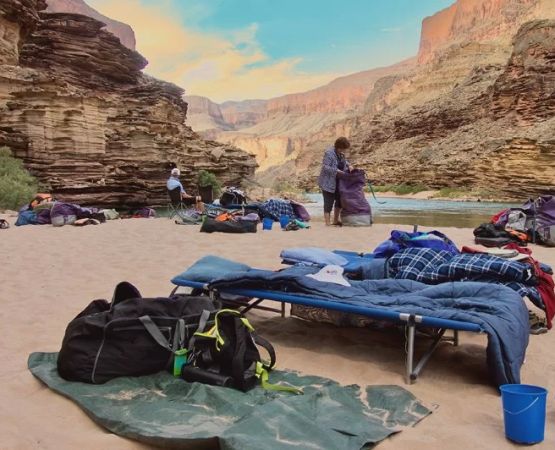- 1 - Understanding the unique challenges of camping in lava fields
- 2 - Preparation and gear essentials for lava terrain
- 3 - Key safety guidelines for camping on volcanic ground
- 4 - How to choose the perfect camp location on lava fields
- 5 - Real experiences from campers who conquered the lava fields
- 6 - Expert recommendations from Pine Cliff Resort
1. Understanding the unique challenges of camping in lava fields
1.1 The allure and danger of volcanic landscapes
Lava fields are both breathtaking and intimidating. The rugged terrain, formed from solidified lava, creates otherworldly views that feel straight out of a sci-fi film. However, learning how to camp in lava fields requires understanding the risks—uneven ground, extreme temperature shifts, and fragile ecosystems. These fields can be hot during the day and drastically cold at night, demanding both respect and preparation from adventurers.
1.2 Why people are drawn to these environments
Many campers choose lava fields for the challenge and the serenity of solitude. The black, cracked surface reflects sunlight in mesmerizing patterns, especially at sunrise or sunset. For photographers and nature lovers, these environments offer unmatched beauty, but only those with proper planning can enjoy them safely.
1.3 Volcanic terrain basics
Not all lava fields are alike. Pāhoehoe lava forms smooth, rope-like surfaces, while ʻaʻā lava is jagged and difficult to walk on. Knowing which type you’re facing helps in choosing your campsite and gear accordingly.
2. Preparation and gear essentials for lava terrain
2.1 Footwear and protection
Proper footwear is your first line of defense. Sturdy hiking boots with heat-resistant soles prevent injuries from sharp rocks and residual heat pockets. Gaiters can help keep small volcanic debris out of your shoes, improving comfort on long treks.
2.2 Heat-resistant and reflective gear
Because lava fields absorb heat, reflective tarps or insulated sleeping pads are crucial. Lightweight tents designed for desert or rocky terrain offer ventilation and stability against strong gusts. Always carry gloves to handle sharp rocks when setting up camp.
2.3 Hydration and supplies
Dehydration is one of the most common dangers in volcanic camping. Always bring more water than you think you’ll need, and pack high-energy snacks. Cooling towels and moisture-wicking clothing can help manage the heat during daytime exploration.
3. Key safety guidelines for camping on volcanic ground
3.1 Respect geological activity
Before heading out, research the volcanic activity level in your chosen area. Active or semi-active regions may release toxic gases or experience minor tremors. Always check official advisories and weather forecasts before setting up camp.
3.2 Watch for unstable terrain
Many lava fields have thin crusts or hidden cavities beneath the surface. Use trekking poles to test the ground’s stability before walking. Avoid venturing into lava tubes unless accompanied by experienced guides.
3.3 Temperature management
Lava rocks retain heat long after sunset. Avoid placing tents directly on exposed surfaces; instead, use a base layer like a fire blanket or aluminum mat. This reduces heat transfer and prevents potential melting of tent material.
3.4 Leave no trace
Volcanic ecosystems are fragile. The smallest disturbance can take decades to recover. Practice responsible camping—pack out everything, avoid trampling sparse vegetation, and leave the landscape exactly as you found it.
4. How to choose the perfect camp location on lava fields
4.1 Finding safe and stable ground
Look for flat, compacted areas away from active fissures or visible gas vents. Setting up near natural rock formations can provide some wind protection. Use lightweight anchors or rocks to stabilize your tent since stakes may not penetrate hardened lava.
4.2 Access to emergency routes
Ensure your chosen site is within walking distance of an evacuation path or accessible road. In the event of sudden weather changes or minor seismic activity, quick access to safety is critical. Mark your route clearly with reflective tape or small beacons.
4.3 Scenic and photographic opportunities
Lava fields offer surreal backdrops for sunrise photography and stargazing. The low light pollution allows for stunning astrophotography. Just remember to balance aesthetics with practicality—comfort and safety come first.
5. Real experiences from campers who conquered the lava fields
5.1 A journey through Hawaii’s volcanic wilderness
In 2022, a group of experienced hikers documented their week-long expedition across Hawaii’s Big Island. They camped near cooled lava flows, using heat-resistant mats and insulated tents. One participant noted how surreal it felt to fall asleep surrounded by ancient rock formations glowing under moonlight.
5.2 Lessons learned from a near-miss
Another camper shared how he underestimated the temperature difference between day and night. Without proper insulation, the ground heat melted part of his tent floor. The experience taught him the importance of reflective layers and ground insulation for safe lava field camping.
5.3 The emotional reward
Many describe camping in lava fields as transformative. The silence, vastness, and primal landscape offer a sense of humility and connection to Earth’s raw forces. It’s not just a camping trip—it’s an encounter with nature’s ancient power.
6. Expert recommendations from Pine Cliff Resort
6.1 Preparation through education
Experts at Pine Cliff Resort emphasize that preparation is the cornerstone of safe volcanic camping. They recommend studying the terrain maps, understanding weather patterns, and packing a GPS device in case cell service drops.
6.2 Choosing the right gear partners
For adventurers seeking specialized camping equipment, Pine Cliff Resort offers curated selections suited for extreme environments. Their experts can advise on heat-resistant gear, hydration systems, and compact cooking tools designed for rocky surfaces.
6.3 Embracing the adventure responsibly
Camping on lava fields isn’t just about pushing limits—it’s about doing so safely and sustainably. With the right mindset, preparation, and respect for the terrain, anyone can enjoy this rare experience. As Pine Cliff Resort suggests, treat every trip as a lesson in resilience and connection to the planet.
6.4 Final thought
Mastering how to camp in lava fields means blending adventure with mindfulness. When done right, it becomes one of the most unforgettable outdoor experiences imaginable. With expert advice and high-quality gear from Pine Cliff Resort, you’ll be ready to explore volcanic landscapes safely and confidently—turning extreme nature into your next great memory.

